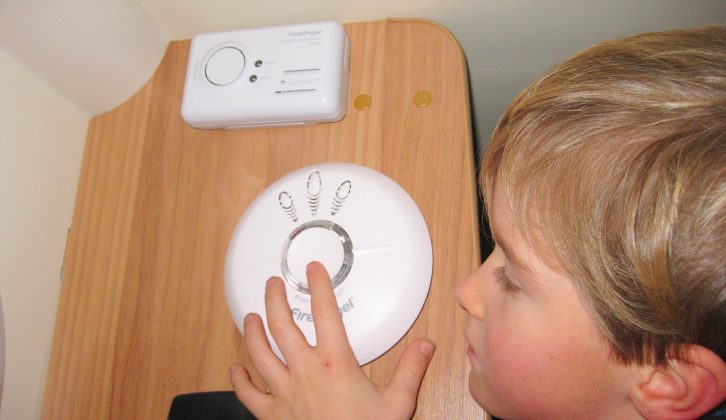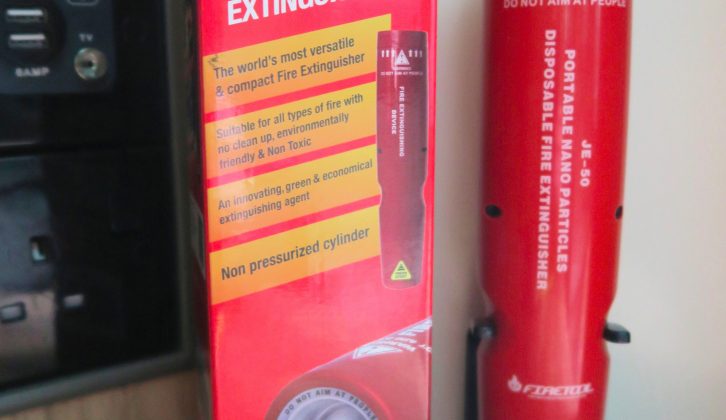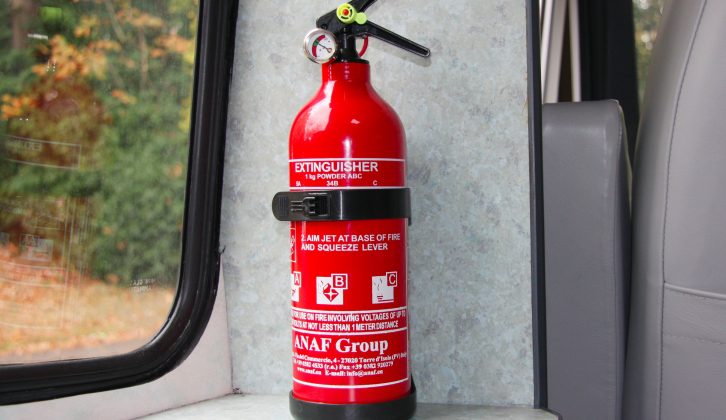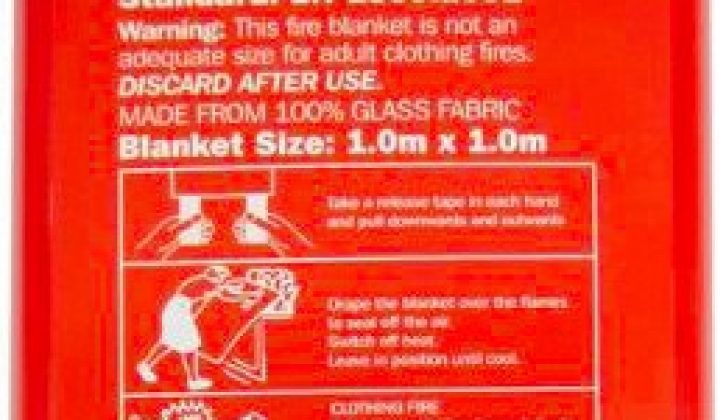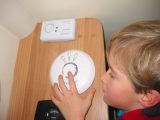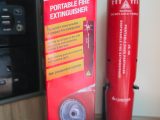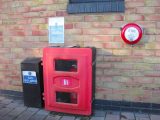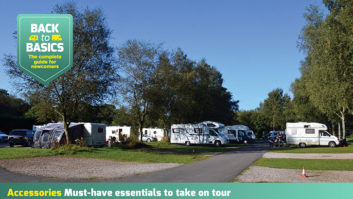If you have ever been unfortunate enough to have lost your motorhome to fire, or to have witnessed one go up in flames, you’ll know that it’s a truly shocking experience.
Some campsites are in very remote areas. Imagine the damage that could be caused if it takes more than 30 minutes for a fire engine to get to you.
It really doesn’t take very long to completely destroy a motorhome.
Hopefully I’ve caught your attention enough to make you read on and consider the following fire-safety tips.
Smoke alarms
Most modern motorhomes are pre-fitted with a smoke alarm.
If yours isn’t, one can be purchased at most camping-equipment retailers or online.
All smoke alarms have an expiry date, which can often be found on the rear – after this date the whole unit will need to be replaced.
Most motorhome smoke alarms are battery-operated, and they will need regular testing.
As a family, we try ours every time we pitch at a site, and always ensure we have a spare battery in the ’van.
There are now 10-year ‘sealed for life’ alarms on the market which use lithium batteries, negating the need to change the battery during the lifespan of the product.
These can be cost-effective, and offer additional reassurance in the long-run.
If, like me, you love grilling bacon or making toast, then your sensitive alarm probably goes off quite regularly! Thankfully, toast-proof smoke alarms are now available.
Fire extinguishers
Under regulation BS EN3 (which applies to pressurised canisters), all fire extinguishers must be colour-coded, depending on the fire-suppressing agent within them.
For example, red is water; cream is foam; blue is dry powder; and black is CO2. The different classes are as follows:
- Class A – water, foam or dry powder, suitable for fires involving organic materials, such as wood, paper and textiles
- Class B – foam, dry powder, carbon dioxide (CO2), suitable for fires involving flammable liquids like petrol, diesel and paints
- Class C – dry powder, suitable for flammable-gas fires, like propane and butane
- Class D – M28/L2, used when flammable metals, for example lithium, are on fire
- Electric equipment – dry powder, carbon dioxide (CO2) extinguishers are used for these fires
- Class F – foam, carbon dioxide (CO2) or a fire blanket, for fires where cooking oils and fats are involved
Electrical fires tend to fall into most of the classifications above, because it’s not electricity that is itself burning, but the material that has caught alight because of a faulty electrical current.
If it’s safe to do so, then it’s advisable to turn off the electricity before tackling the fire.
A recent development on the market, and verified by the National Caravan Council, is Firetool.
It works on all types of fires, including flammable liquids, flammable gases, electrical fires, and cooking oils and fats.
The Firetool JE50 is lightweight and compact at just 495 grams, and measures only 24.2cm (9.5 inches) high and 5cm (just under 2 inches) in diameter.
Other advantages of the product are that it is not in a pressurised cylinder, therefore there are no maintenance costs, it leaves no residue after discharge and it is not toxic (to humans or animals), as are most conventional foam or dry-powder extinguishers.
This is quite important considering the small space in which you might be tackling the fire.
A few points to note:
- Old-style portable fire extinguishers are still legal, as long as they are within their expiry date
- Powder extinguishers will leave a residue that can damage electrical equipment
- Water extinguishers should not be used on a live electrical fire because of the potential for electrocution.
Fire blankets
Fire blankets are particularly useful for fighting cooking-oil or fat fires.
Do you know what would happen if you poured a cup of water onto a fat fire?
The result is a huge fireball, which in an enclosed space such as a motorhome would be devastating to human life as well as the ’van itself.
So, if you like cooking chips using fat, be sure to invest in a fire blanket.
On-site regulations
Most campsites stipulate that there must be a six-metre gap between units.
This creates a reasonable space to allow someone to escape in the event of an incident, and for the emergency services to get access to tackle a fire.
Also, such spacing should hopefully prevent other motorhomes or caravans catching alight in the event of a fire. However, this cannot be guaranteed if it is a windy day, of course.
What’s more, some sites in mainland Europe don’t adopt this approach, leaving you crammed in like sardines.
Sites should be fully equipped with a fire extinguisher, a fire hose and a siren.
It is worth checking where the official meeting point is in case of an emergency, and where you can find the fire notices, which will give you lots of useful fire-safety information.
If you’re at a site that has no fire equipment, it is recommended that you buy a fire bucket, fill it with water and have it positioned alongside your ’van.
The Caravan and Motorhome Club offers a leaflet on fire safety, which will inform you of best practice at its sites.
A final thought on fire safety
A motorhome has many flammable devices on board, including fridges, gas cylinders, water heaters and so on.
In the event of an emergency, your first priority should be your own personal safety – and you should never put your life at risk.
However, it is worth investing in fire-safety devices to prevent major damage or injury.
Make yourself familiar with the fire extinguishers, alarms and meeting areas when you pitch on site.
Doing so will give you a little bit more control in a potentially very serious situation.
In the event of an emergency, your first priority should be your own personal safety


